Beetroot Stained Salmon Gravadlax
The inspiration for writing and making this dish came from Jamie Gorman. Jamie is a full blooded foodie and wine connoisseur, like me he takes every opportunity to chat about food; discuss the latest trends and when Jamie asks me how to do something I am more than happy to help.
Jamie mentioned to me at the beginning of December that he would like to make a beetroot stained salmon gravadlax for Christmas Day, well the juices started to flow. I got all excited and even started to draw ideas on A4 paper. I loved the fact that Jamie was very specific about serving his dish on a black slate and that he wanted to use a spoon.
Inspired I set of to work on my own version of beetroot stained salmon gravadlax. I love a challenge and thought that this dish would be a show stopper for a slap up New Years Eve Party, after all we are celebrating the end of a decade…..
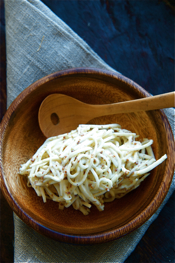
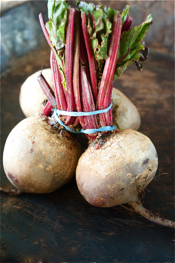
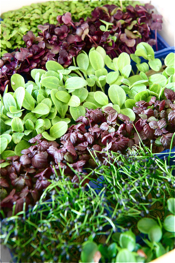
Happy New Year!!
The imminent end of the decade switched my thoughts to a new topic – What stood out for me during the past decade…
In the world of cookery techniques I think it must definitely be spherification, regeneration of sous-vide cookery and espumas. My favourite kitchen gadgets for the past decade must be the microplane graters, the new redeveloped Thermomix TM31, the comeback for cream whippers and the Clifton Water Baths. My favourite foodie ingredients must be micro-cress, sumac, ras-el-hanout, agar agar and edible glitter. My favourite foodbooks in the past ten years are Momofuku by David Chang, McGee on Food and Cooking by Harrold McGee, Under Pressure by Thomas Keller; to be honest I could carry on and list at least 20 books to rank on my favourites list for the past decade.
I actually thought that food books were dying a death as there are so many on the market and that nearly every man and his dog who profess to like cookery has ‘written’ a cook book ; even ex- fashion models and wives of chefs are at it. For me it’s the quality and the points of difference that stand out that make a good food book. I use them all for different reasons, for example, Momofuku, I love because of the really good business advice, McGee’s is about the technicalities and molecular explanations of certain foods stuffs and cookery methods and Under Pressure taught me how to use my water bath. It’s not about taking a cookbook and following a recipe from beginning to end but to gain inspiration and learning from the reading experience. I also thought another reason for cookbooks to die out is the revolution of food blogging and the sheer volume of recipes available on the internet, but then I hope not as I have a few good reasons to hang onto quality cookbooks and still purchase them regularly.
I also think that grow your own, kitchen gardens, cooking at home and foraging have evolved over the last decade and benefited from regeneration to make a definite comeback. We have suffered a severe recession in the past two years and it made us examine how we obtain food, how much we buy and throw away. Recycling and composting is the order of the day. I also love the way we have re-discovered the age old techniques of preserving foods such as making jams and chutneys; baking bread at home and the use of “forgotten cuts of meat” such as pigs cheeks, pork belly and pigs head. It came back in fashion in such a manner that St Johns Restaurant with Fergus Henderson is taking the proud spot for being ranked in the top twenty best restaurants in the world and he cooks pigs ears, trotters and all sorts of cuts we would not have necessarily loved eating a decade ago.
Foraging for food is back in “vogue” and people run businesses and produce books on this subject. I think it’s fantastic to turn back to the land we live on, enjoy and make the best from it. It’s definitely not a “new” thing as it’s been done for many decades and generations but it’s definitely my new way of living.
I hope this post sets you off thinking about your foodie highlights over the past decade, it’s fun and I do not expect everyone to agree with my choices but then food is subjective and I love it.
Happy New Year and may the next 10 years be another foodie triumph!
Beetroot Stained Salmon Gravadlax
- 700g whole piece of wild salmon skin on
- 80g table salt
- 80g caster sugar
- Zest of one orange
- 2tbs chopped fresh dill
- 200g fresh beetroot peeled
Remove the scales and pin bones from the salmon, remember that the fish should be super fresh. Pat the salmon dry with kitchen paper.
Mix the salt, sugar, chopped dill and orange zest and spread half of this mixture in the bottom of a deep tray or dish for the salmon to cure in. Make sure the length of the fish fits in the dish as it should remain flat at all times.
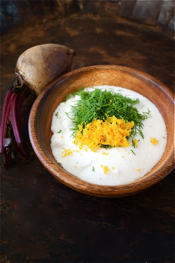
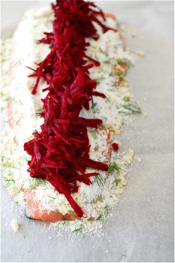
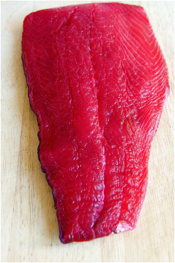
Place the salmon skin side down onto the salt sugar mixture, spread the rest of the mix over the salmon.
Peel the beetroot and grate the beetroot using a course grater, spread the grated beetroot over the salmon, pasting it on nice and thick, cover the salmon directly with cling film and place something heavy directly onto the salmon to weigh it down.
Place the salmon in the fridge and leave to cure for 2/ 3 days, turn it each day that you leave it to cure. I cured my salmon for 2 days as the fish was fairly thin but if you have a thick piece of salmon I suggest the full 3 days curing time.
After your fish is cured remove it from the dish and rinse the salmon under cold running water, pat the salmon dry with kitchen paper and place the salmon on a clean tray, cover with food wrap and refrigerate until needed.
The salmon will last for up to 5 days in the fridge once cured.
Celeriac Remoulade
- 600g celeriac
- 50g mayonnaise
- 40g grain mustard
- Salt and freshly cracked black pepper
- Squeeze of fresh lemon juice
Peel the celeriac and use a mandolin to finely slice the celeriac and then julienne it very finely with a sharp knife. The finer you julienne the celeriac the better your remoulade would turn out as you do not cook the celeriac but eat it raw.
Place the julienne of celeriac in a large mixing bowl, add seasoning, mustard and mayonnaise, mix very well to ensure a even distribution of the mayonnaise and mustard.Taste and adjust the seasoning if needed and add freshly squeezed lemon juice to taste.
Transfer the remoulade into a clean container and refrigerate until needed.
Food Fanatics Tip
I normally make my remoulade a couple of day's in advance, it saves time and I like the improvement of taste. The celeriac remains crispy.
Beetroot Puree and Jelly
- 400g whole fresh beetroot, peeled
- 30g malt vinegar
- Salt and freshly cracked black pepper
- 1.5g agar agar
For the puree: Peel and cut the beetroot into even size pieces, place the beetroot in a saucepan cover with cold water, add the vinegar and add salt to the water, bring the beetroot to the boil and cook until tender.
Drain the beetroot from the cooking liquid, keep the liquid.
Puree the beetroot, with 50ml of the cooking liquid, until smooth in a food processor, taste and adjust the seasoning. If the puree is a bit too thick add a bit more of the cooking liquid. Take 200g of the puree to make the jelly and cool the rest until needed.
For the jelly: Get a tray ready, I used a 14cm x 21cm x 1.5cm tray. I found these exact trays at Muji and they are perfect. Do not line the tray with cling film as agar does not set in this product, bizarre, I'm not entirely sure why.
Place 200g of the beetroot puree, 50ml of the cooking liquid and the agar agar into a small saucepan. Bring the mixture to the boil, once it's boiling pour the mixture immediately into the tray and do not move the tray until the jelly is completely set. If you move the tray it will not set.
Leave to cool completely before using.
Mini Spelt, Walnut and Honey Loaves
- 125g strong white flour
- 125g spelt flour
- 5g table salt
- 20g fresh yeast or 7g dried yeast
- 15g honey
- 125ml water
- 50g walnuts
- 1 free range egg yolk
Place the yeast, 50g flour and the honey in a small mixing bowl and add 50g of water, mix well, cover and leave to prove for 30 minutes in a warm spot until the mixture starts to bubble.
In the bowl of a mixer add the remaining flour, bubbling yeast mixture, walnuts, salt and the remaining water together. Attach the dough hook and mix the bread dough on slow speed for 10 minutes.
Grease a large mixing bowl, once the dough is ready, turn it out onto a lightly floured work surface and shape the bread dough into a smooth ball. Place the smooth bread dough into the greased mixing bowl and cover the bowl with a clean tea towel. Leave to prove until the dough has risen double in size.
Preheat the oven to 200°C and grease 12 mini loaf holes.
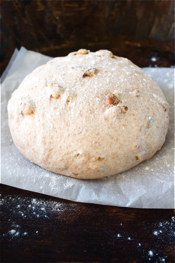
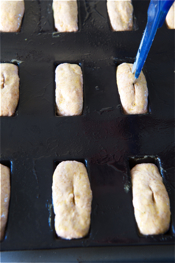
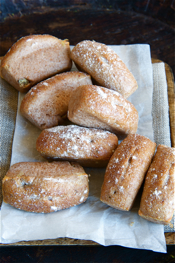
Gently turn the bread dough out onto a lightly floured work surface and if you are making the individual mini loaves divide the dough into 12 x 40g even size dough balls. Roll each ball into a evenly shaped log that fits into each greased mini loaf hole, once you have rolled all the loaves cover the tray with cling film or a clean dry tea towel and leave it to prove for the second time until nearly double in size, brush the risen loaves carefully with the egg yolk and use a pair of scissors to make small cuts at the top of the risen loaves.
Place the baking sheet with mini bread loaves in the middle of the preheated oven and pour 100ml of cold water directly onto the floor of the oven and shut the door quickly. The water will give a burst of steam that will help the loaves to puff and form a lovely crust. Bake them for 16 - 18 minutes, turn the loaves out onto a cooling rack and leave to cool completely.
Assembling the Dish
- Cured Beetroot Stained Salmon Gravadlax
- Chilled Beetroot puree
- Beetroot jelly
- Horseradish cream
- Micro Cress Salad leaves such as tahoon cress or pea tops
- Mini Spelt, Honey and Walnut loaves
- Celeriac Remoulade
- Zest of one orange
- Pickled baby beetroots
Slice the gravadlax into wafer thin slices and arrange them on one side of the slate square, fill small spoons with the celeriac remoulade and place it at the oposite end of the plate, slice the mini bread loaves in slices and place them next to the celeriac remoulade spoon.
Pull a long swipe of the beetroot puree on the slate, from one corner to the other. Arrange the pickled baby beets, a couple of tiny spoons of the jelly, a few dollops of the horseradish cream and arrange the salad leaves over the dish followed by a few strands of orange zest.
Serves 10
Print Recipe Print Recipe with Photo Email this Recipe

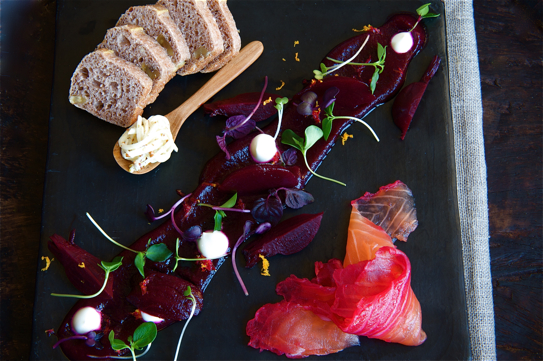




Wonderful everything works together a complete gem
[...] Beetroot Stained Salmon Gravadlax Recipe by Madalene Bonvini-Hamel … [...]